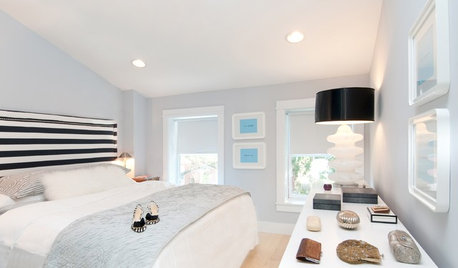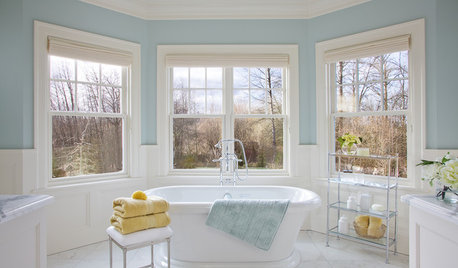French polishing furniture
I think I got this from the furniture guys but since I don't know for sure, I won't give any attributes except to say, "It's not my recipe, but it's labor-intensive and it works."
FRENCH POLISH
French polish is frequently used as the only finish on wood classical stringed instruments, because it can be completely controlled and made to sit on top of the wood and not soak in to change the resonance of the wood molecules.
You can use french polish as a finish too, but it's fairly tender as a standalone finish and is easily damaged. The nice part is that it's easily repaired too.
French polish can be used over natural finishes like lacquer and oil, but isn't recommended on finishes like polyurethane, acrylic or latex, but give it a try if you'd like to, new discoveries would never be made without experimentation.
The main ingredient in french polish is shellac. We made a light covering, pun intended, of shellac in our newsletter Nov 9, 2002 and we'll cover some more at another time. Shellac is fascinating stuff, whether brushed, rubbed or sprayed on furniture, sprayed on your hair to keep it in place or used as a coating on your pills to make them slide down smoother.
French polishing can be very difficult to accomplish properly, so don't expect your first try to be perfect, it takes some practice and a lot of elbow action. Around the turn of the century into the newly arrived 1800's french polish was popular in Europe. In those days labor was cheap and the materials were, relatively speaking, expensive. The art came to the United States later, then as labor became more expensive, both there and here, the french polishing art died out, because it is so labor intensive. Many professional refinishers and even antique restorers don't know how to french polish, because it's so much easier to grab a brush and apply a brush on finish.
The materials you'll need for french polishing are:
Shellac - The main ingredient is shellac. The french polish purist would say that you have to start with bare wood and flake shellac, but we'll cover some fudging using pre-mixed shellac too. The true final french polishing should be done with flake shellac that you mix yourself though as it will dry quicker and you can build many, many thin coats of french polish to give a great appearance of depth and shine. Pre-mixed shellac has a shelf life, generally not more than about a year and as it gets older will dry slower. Shellac flakes aren't a commonly found item in the local paint store.
Denatured alcohol - There are three different types of alcohol, ethanol or grain alcohol the headache inducing, hic-up causing drinking type; methanol or wood alcohol, the kind that can cause blindness and other dire things in small doses and death in not too much larger doses; Isopropanol or isopropyl alcohol is poisonous internally, but is used in lotions, cosmetics and other such things and makes you give big ahh's when it's rubbed on your back. Denatured alcohol is available anyplace that paint products are sold.
Denatured alcohol is ethanol with enough methanol in it to make it unfit and dangerous for drinking, but is ideal for dissolving shellac flakes.
Denatured alcohol is very flammable.
Oil - Oil is for lubrication to keep the pad from sticking, because wet shellac is very sticky stuff. Pure virgin olive oil is the recommended oil to use and is the least likely to cause any problems. Olive oil is available at the grocery store.
Pad - Pads are the preference of the padder, so you can find many different descriptions of pads. A very good one is from a piece of cotton t-shirt or similar material and a good healthy wad of gauze. Wad the gauze into a ball about the size of a walnut and put it inside the t-shirt material and fold the sides and corners up to make a nice handle. It helps to tie the handle with a piece of string to keep it all together. The pad is savable and reusable as long as it's kept sealed in a jar with a tight lid. If it gets left out and dries it should be thrown away though and a new pad made. The dried shellac can be softened with denatured alcohol, but one little bit of hardened shellac can mess up your french polish job and it isn't worth the chance.
There are a few more miscellaneous and sundry items that we'll cover next time and we'll get started with the actual fun, but we're rapidly running out of time and room today.
French polish Newsletter 2-01-2003
French polishing can cause you to heave a lot of sighs while you're learning it, but with practice you can master it nicely and have some exceptionally fine furniture finishes to your credit.
The first key to french polishing success is surface preparation. To get the depth of shine the surface has to be as glass smooth as possible. There are steps to take in the surface preparation for smoothness and then more steps are taken during the polishing procedure. Keep in mind that improper surface preparation is a guarantee of problems when french polishing.
You can generally french polish over an existing natural finish, such as lacquer, various types of oil, or shellac (shellac is the base for true french polish), but it generally won't work successfully over polyurethane, acrylic or other finishes of that type, because they have formed a thin sheet of plastic over the wood.
The existing finish should be cleaned with a good furniture cleaner, such as Prelude furniture cleaner. After cleaning, wet sand lightly with 400 grit wet/dry sandpaper with a few drops of water for a lubricant. Keep the residue cleaned as you go so that it doesn't have a chance to dry on the surface and cause you problems.
If you plan to french polish over a new lacquer finish, let the lacquer cure for several days before you french polish it.
Apply a good base of shellac over the existing finish. Apply three or four coats of one and a half or two pound cut shellac. More about the cut later. Don't sand until after you've built up the shellac thickness, then sand with 400 grit sandpaper and clean the surface well with a Tack cloth and it's ready for french polishing.
You can use french polish as a stand alone finish on new work. The surface will need more preparation than when you use a brush, wipe or spray on finish. The surface should be glass smooth. Generally the surface will be so smooth that it won't absorb much stain, so the french polish is best used on wood that has a nice appearance on its own and only needs a clear finish.
Unless you have strong arm muscles or want to build them up a finish sander such as the one shown will save a lot of time and energy.
If you're working with wood that has an open grain (loads of little elongated pits or cracks)you'll need to fill the grain so the surface is completely smooth. After initially sanding the wood with 180 grit sandpaper you can use a grain filler such as Wunderfil. It's a water base product and easy to use. Mix it with water according to the directions on the can and work it well into the grain of the wood with a cloth. Rub it in across grain, then with the grain, let it dry and sand it smooth with 220 grit sandpaper.
If you are working with other woods sand the complete new wood surface with 180 grit sandpaper, then 220 grit, then 400 grit. Wipe the surface with a water dampened sponge, which will raise little wood hairs, then resand with 400 grit, then a final sanding with 600 grit sandpaper. If you want to see if you can add a little contrast to the grain pattern with stain you should use only a good oil stain and wipe the excess very thoroughly. There are some water base stains that are formulated to act the same as oil base with good application properties, but you can generally figure on a few little wood hairs being raised from the water base, which will mean another sanding with 600 grit, which could mean sanding off any color that might have been added.
If you're planning to be a french polish purist or you're a glutton for punishment the surface is ready for french polishing. If you'd rather have some time to dunk an extra donut or read a good book you can give the wood surface three or four coats of one and a half or two pound cut shellac. Don't sand until after you've built up the shellac thickness, then sand with 400 grit sandpaper and clean the surface well with a tack cloth. Your ready to french polish your new wood surface.
If you buy ready mixed liquid shellac check the date on the can. If it isn't very recently fresh don't buy it or if the date is a code that you can't make out, don't buy it. If the clerk says that there are new processes or that the can hasn't been opened so the deterioration hasn't started or any other sales hype, give him the fish eye and don't buy it. Shellac has a definite shelf life after it's mixed and as time goes on it will take longer to dry. Pre-mixed shellac should be thrown out after about a year, because it becomes unreliable.
When you french polish, especially just learning the procedure you want to have the most fresh shellac you can have and you want to have every advantage in your favor. The best thing is to purchase Shellac flakes and dissolve your own to be sure that you have the absolute freshest and most reliable shellac possible. Shellac flakes don't lose their drying ability, it's only after they've been dissolved in denatured alcohol that process begins.
We've come to the end of time and space for french polish for this newsletter, we'll continue next time.
French polish Newsletter 2-15-2003
First thing we'd better explain the cut of shellac. A one pound cut means one pound of shellac flakes dissolved in one gallon of denatured alcohol, a one and a half pound cut is one and a half pounds of shellac flakes dissolved in a gallon of denatured alcohol and so on.
A gallon of shellac will go a long way, so it's better to mix a pint at a time, which covers a good size area too. Since there are eight pints in a gallon and 16 ounces in a pound you'll need to dissolve two ounces of shellac flakes in a pint of denatured alcohol to get a one pound cut, four ounces of shellac flakes in a pint of denatured alcohol for a two pound cut and so on.
The flakes will take about 24 hours to dissolve, or if you pulverize the flakes and warm the denatured alcohol in a container of warm tap water the shellac dust will dissolve fairly quickly. Never, never heat denatured alcohol directly and don't heat it on a stove or with open flame, such as a propane torch. Denatured alcohol is extremely flamable.
Be sure to mix your shellac in a container that can be sealed tightly and put a sticker on it with the date you dissolve the flakes.
If you use store bought shellac be sure to check the pound cut on the container. A one and one half to two pound cut is easiest to use, so you can add denatured alcohol to the ready mixed shellac for the amount necessary to get that cut.
Now we can start the french polish bodying. You'll need your pad, shellac, an eyedropper for applying olive oil to the pad and olive oil. Load the inner wad of gauze with shellac and squeeze most of it out, then put the wad inside the square of t-shirt or similar material and fold the corners up. Pat the pad against the palm of your hand to disperse the shellac evenly on the surface of the pad. It's best if you wear vinyl or Nitrile gloves, because shellac is sticky stuff. Apply two or three drops of olive oil on the face of the pad and start the bodying session. You need to apply the pad to the surface in a gliding motion, holding the pad above the surface and come in with a sweeping motion onto the surface, then at the end of the motion leave the surface at an angle. You'll be applying very minute layers of shellac and shellac dries quickly and is solvent to itself, so if you were to come down directly onto the surface with your pad or stop a sweeping motion with the pad on the surface it would leave an imprint of your pad on the surface of your french polish.
Work on a small area at a time, one or two square feet. Practice the sweeping motion for a while, then work your movement into a circular motion and work into a figure eight motion. Using a figure eight will insure that everything is covered in all directions. You'll see a film of shellac behind the pad, as you move the pad along, for a short time before it sets up. Start your actions with a light pressure and as you progress in layers increase the pressure, not real hard because that would tend to remove the french polish you've already put on, but just a good substantial pressure, which will insure hardness and shine. You should end up with about 100 minute layers of shellac over the whole surface. There will need to be six to eight of these bodying sessions during the whole french polishing process.
If the pad feels like it's starting to drag you can add two or three more drops of olive oil with the dropper. When you move to a new area or when you can't see a film of shellac being added to the surface behind the pad, dip the inner pad into the shellac and squeeze it mostly out, put it back in it's cover and pat it against the palm of your hand to distribute it evenly. Don't have too much shellac in the pad at any time. Cover the whole area of the surface you're working on the same way. If you get too much shellac in the pad or if it tends to distribute to the outer edges of the pad, squeeze the pad in a cloth to remove the excess and distribute it more evenly.
Next time we'll go into stiffing, spiriting and a little on filling with pumice, which should pretty well cover french polish.
French Polish Newsletter 3-01-2003
After you finish the bodying session when french polishing you go on to stiffing.
The stiffing process is to remove any little ridges that may have formed as you do the bodying process and to remove any excess oil on the surface of the polish.
You should perform the stiffing process after each of the six to eight bodying sessions before any excess oil has a chance to set. Stiffing will smooth out any little ridges left by the pad as you body. They'll be distributed making the surface as smooth as possible and the smoothness is what makes the shine of french polishing.
For stiffing you won't need any more oil, but you'll need just two or three drops of shellac on your pad and several drops of alcohol. The pad should be just damp and you should check it periodically. If it is more than just damp squeeze any excess out in a clean cloth.
After you ready your pad come in with a sweeping motion back and forth until you've covered the whole area. Use a firm pressure, but not hard enough to remove the previous layers. The stiffing isn't adding more layers, but you don't want to remove any either.
After stiffing allow the finish to sit for a couple of hours to let any excess oil that doesn't become part of the polish to come to the surface.
The next step is spiriting and is exactly identical to stiffing, only this time you're removing excess oil that has seeped up, instead of ridges.
Allow the french polish to dry for a few hours before you start the next session, then repeat the whole process again until you've completed six to eight sessions.
If you don't allow enough time for each session to dry completely it will continue to dry after the next bodying session has been applied, but the top session will dry more quickly and as the underneath session dries it will shrink, causing the top application to craze.
Check your work from all directions with good light.
After several sessions, if you're safisfied with the appearance, you're done. If you can see some imperfections after the last session you can go on to rubbing.
Rubbing is actually polishing your french polishing job with rottenstone. Rottenstone is a very, very fine abrasive powder, which will rub away anything sticking up and will help to fill minute pits and other voids. You can put the rottenstone in a salt shaker and shake a light sprinkling on your work area and, using your french polish pad, add a few drops of oil and gently, but firmly rub the whole surface until it has the appearance you want. You can use water for a lubricant too, but it will cause much quicker cutting of the abrasive action, so oil will give you more control.
Now, if you're happy with the appearance, you're done, but. . . If you'd like a little protection for your labors you could appy some wax, such as Antiquax. When you wax, apply the wax very sparingly, so it can dry properly and as hard as possible. Thick coatings of wax tend to stay soft and will soon show imperfections.
There, you're done, except to get a cup or glass of a beverage of your choice and sit and observe the fruits of your labors and to be proud of yourself.

















cooperbailey
annathome
Related Discussions
Best tips/products for dusting & polishing of wood furniture?
Q
Clean/Polish WOOD furniture - what do u use?
Q
not getting exp. iridescence + depth with shellac French polish?
Q
Are the Crate&Barrel French Kitchen series marbles polished or honed?
Q